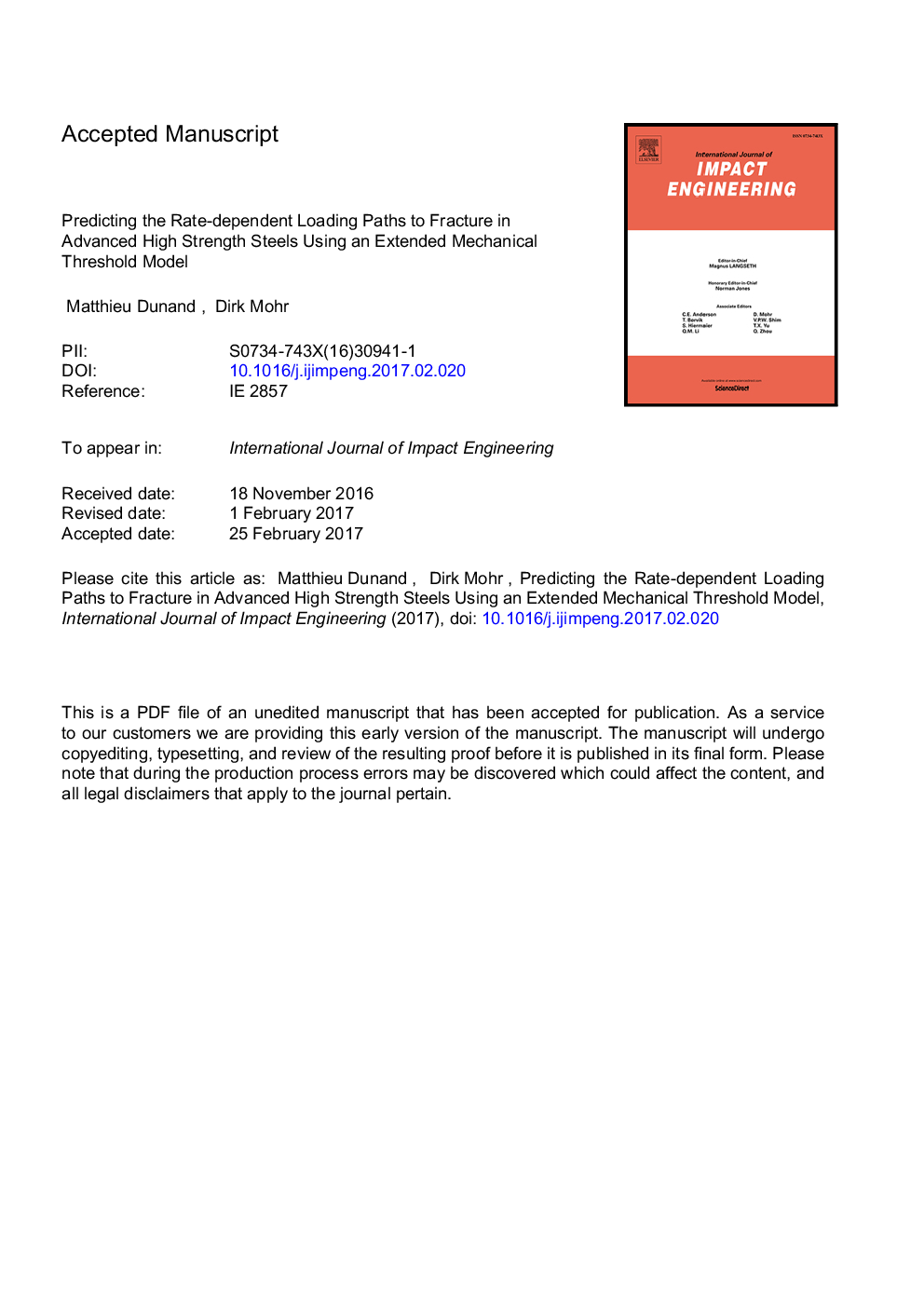| کد مقاله | کد نشریه | سال انتشار | مقاله انگلیسی | نسخه تمام متن |
|---|---|---|---|---|
| 5015526 | 1464043 | 2017 | 44 صفحه PDF | دانلود رایگان |
عنوان انگلیسی مقاله ISI
Predicting the rate-dependent loading paths to fracture in advanced high strength steels using an extended mechanical threshold model
ترجمه فارسی عنوان
پیش بینی مسیرهای بارگیری وابسته به سرعت به شکست در فولادهای پیشرفته با استفاده از یک مدل آستانه مکانیکی توسعه یافته
دانلود مقاله + سفارش ترجمه
دانلود مقاله ISI انگلیسی
رایگان برای ایرانیان
کلمات کلیدی
موضوعات مرتبط
مهندسی و علوم پایه
سایر رشته های مهندسی
مهندسی مکانیک
چکیده انگلیسی
Tensile experiments are carried out on a TRIP780 steel sheet at low (ÉËâ¼10â3sâ1), intermediate (ÉËâ¼1sâ1) and high strain rates (ÉËâ¼103sâ1). The experimental program includes notched as well as uniaxial tension specimens. Local displacements and surface strain fields are determined using Digital Image Correlation. Constitutive equations derived from Mechanical Threshold Stress (MTS) theory are proposed to describe rate-dependent behavior as well as the plastic anisotropy of the sheet material. Detailed finite element simulations of all experiments reveal that the model accurately predicts experimental results, including force displacement curves and local surface strain evolution. In particular, the behavior observed at large strains, beyond the onset of necking, is well predicted. Stress and strain histories where fracture initiates are extracted from the simulations to characterize the dependence of the material ductility on both loading velocity and stress state. The results clearly show that the fracture strains in high strain rate Hopkinson bar experiments are significantly higher than in static experiments. The same good agreement between the predicted and experimentally-measured force-displacement curves is also obtained when using a Johnson-Cook plasticity model. However, the direct comparison of the strain and strain rate evolution inside the necks revealed that the results from hybrid experimental-numerical analysis are highly sensitive to the choice of the plasticity model formulation.
ناشر
Database: Elsevier - ScienceDirect (ساینس دایرکت)
Journal: International Journal of Impact Engineering - Volume 108, October 2017, Pages 272-285
Journal: International Journal of Impact Engineering - Volume 108, October 2017, Pages 272-285
نویسندگان
Matthieu Dunand, Dirk Mohr,
